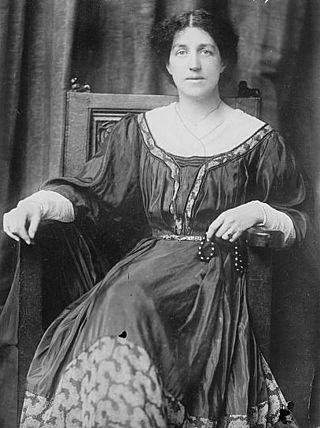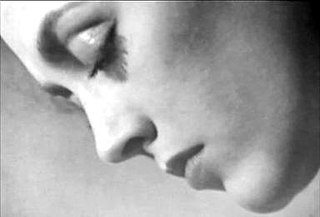
David Royston Bailey is an English photographer and director, most widely known for his fashion photography and portraiture, and role in shaping the image of the Swinging Sixties.

Evil Angels is a 1988 Australian drama film directed by Fred Schepisi. The screenplay by Schepisi and Robert Caswell is based on John Bryson's 1985 book of the same name. It chronicles the case of Azaria Chamberlain, a nine-week-old baby girl who disappeared from a campground near Uluru in August 1980, and the struggle of her parents, Michael Chamberlain and Lindy Chamberlain, to prove their innocence to a public convinced that they were complicit in her death. Meryl Streep and Sam Neill star as the Chamberlains.

Mary Delany later Mary Pendarves was an English artist, letter-writer, and bluestocking, known for her "paper-mosaicks" and botanic drawing, needlework and her lively correspondence.

Mary "May" Morris was an English artisan, embroidery designer, jeweller, socialist, and editor. She was the younger daughter of the Pre-Raphaelite artist and designer William Morris and his wife and artists' model, Jane Morris.

Frederic Alan Schepisi is an Australian film director, producer and screenwriter. His credits include The Chant of Jimmie Blacksmith, Plenty, Roxanne, A Cry in the Dark, Mr. Baseball, Six Degrees of Separation, and Last Orders.

Lenore Tawney was an American artist working in fiber art, collage, assemblage, and drawing. She is considered to be a groundbreaking artist for the elevation of craft processes to fine art status, two communities which were previously mutually exclusive. Tawney was born and raised in an Irish-American family in Lorain, Ohio near Cleveland and later moved to Chicago to start her career. In the 1940's and 50's, she studied art at several different institutions and perfected her craft as a weaver. In 1957, she moved to New York where she maintained a highly successful career into the 1960's. In the 1970's Tawney focused increasingly on her spirituality, but continued to make work until her death.
Oleg Vassiliev was a Russian painter associated with the Soviet Nonconformist Art style. Vassiliev emigrated to the United States, arriving in New York City in 1990 and later lived and worked in St. Paul, Minnesota.
Del Kathryn Barton is an Australian artist who began drawing at a young age, and studied at UNSW Art & Design at the University of New South Wales. She soon became known for her psychedelic fantasy works which she has shown in solo and group exhibitions across Australia and overseas. In 2008 and 2013 she won the Archibald Prizes for portraiture presented by the Art Gallery of New South Wales. In 2015 her animated film Oscar Wilde’s The Nightingale and the Rose won the Film Victoria Erwin Rado Award for Best Australian Short Film.

Bridget Bate Tichenor was a British surrealist painter of fantastic art in the school of magic realism and a fashion editor. Born in Paris, she later embraced Mexico as her home.

Douglas Arthur Peter Field, known as Duggie Fields, was a British artist who resided in Earls Court, London.
Susanne Helene Ford was an Australian feminist photographer who started her arts practice in the 1960s. She was the first Australian photographer to have a solo exhibition at the National Gallery of Victoria in 1974 with Time Series. A book of her portraits of women 'A Sixtieth of a Second' was published in 1987. Her photographs and eclectic practice was displayed in an exhibition at the National Gallery of Victoria in 2014.
Elaine Reichek is a New York-based visual artist. Much of her work concerns the history of the embroidered sampler. Through her pieces of hand and machine embroidery and digital sewing machine, she addresses issues such as the craft/art and the old/new divide, the nature of women's work, and the interplay of text and image. The connection between the pixel and the stitch, as differently gendered types of mark-making, is a continuing theme in her work.
Lucy Fradkin is an American self-taught artist from New York who paints portraits which often include collage elements. She is inspired by Persian and Indian miniature paintings with bright palettes and flattened space as well as the ancient frescoes and mosaics of Etruria, Rome, and Byzantium. In addition, she visited the Brooklyn Museum as a young artist with her mother and was inspired by The Dinner Party by Judy Chicago, as a prominent piece of art by a living woman artist.

Lisa Reid is an Australian artist, known primarily for her highly detailed figurative works in a variety of mediums. Reid has worked from her Northcote-based studio at Arts Project Australia since 2000, where she held her first solo show in 2015. She has exhibited widely, both nationally and internationally and her work was recently selected for the landmark exhibition Painting. More Painting, at the Australian Centre for Contemporary Art, Melbourne. Her work is held in the collection of the National Gallery of Australia.
Beth Ames Swartz is an American visual artist. While primarily an abstract artist, her paintings often incorporate words and symbols representing philosophical concepts shared by people of different cultural world views. Her daughter, Julianne Swartz, is a well-known, New York based artist.

Mary Card was an Australian designer and educator.

Alice Chapman (1860–1929) was an Australian artist known for her portraits and genre paintings. Her oeuvre also included, amongst other subjects, still life paintings.

Bailey Doogan was an American artist best known for her large-scale, feminist paintings and drawings that offer an unflinching look at the aging, female body and that tackle cultural issues like the equation of beauty with youth. Doogan's artwork has been reviewed in numerous publications, including Art in America, The Nation, Art Journal, Ms., ARTnews and the New Art Examiner. Her work also has been reproduced in Harper's Magazine.

Mary Cozens-Walker was an English textile artist and painter best known for her three-dimensional works pertaining to her own domestic life. She exhibited in the United Kingdom, Japan, and the United States. She has appeared as a model in about 600 paintings. Her own work is in national collections and paintings of her are also in national collections.

Madame Georges Charpentier and Her Children is an 1878 oil on canvas painting by Pierre-Auguste Renoir. It depicts Marguerite Charpentier, a French salonist, art collector, and advocate of the Impressionists, and her children Georgette and Paul. The painting is held by the Metropolitan Museum of Art.

















